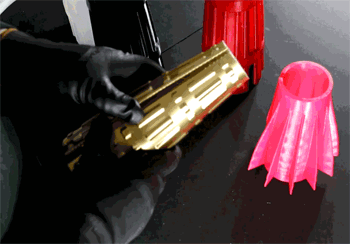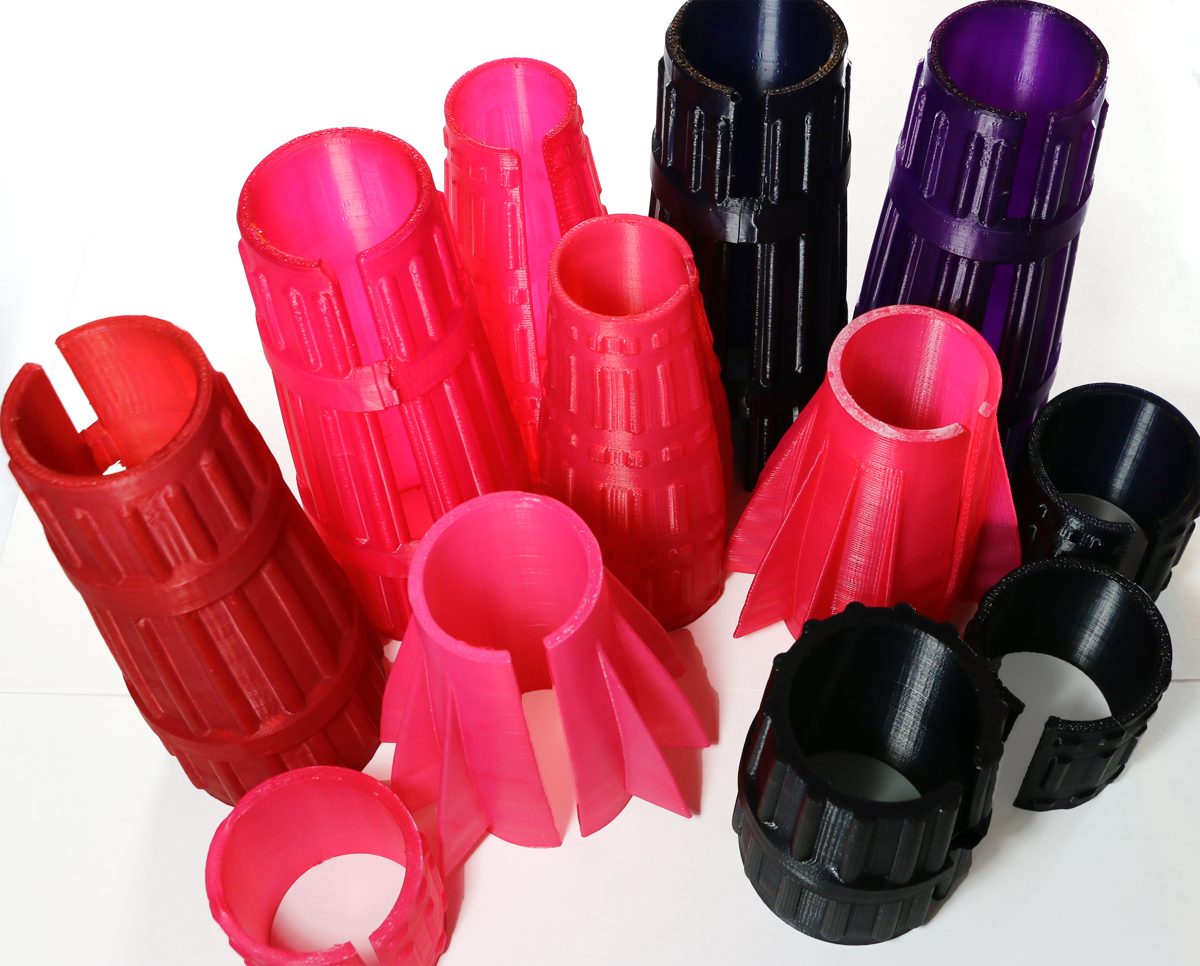taulman3D is already well known for creating easy-to-use, high-performance nylon filament for desktop 3D printing, but the company continues to prove itself to be an innovative developer of 3D printing materials. Their t-glase filament is capable of printing at low temperatures and creating shiny, potentially transparent, objects. The company’s latest filament is just as remarkable as the rest, introducing a whole new class of flexible materials to the world of desktop 3D printing.
taulman3D’s Plasticized Copolyamide Thermoplastic Elastomer, or PCTPE, is a co-polymer made from highly flexible nylon and thermoplastic elastomer (TPE). Combined, this co-polymer offers the smooth and shiny texture of nylon along with the flexibility of the rubber-like TPE. At the same time, the material is meant to be highly durable and non-delaminating. The company has said that its new PCTPE is ideal for printing such items as prosthetics, cosplay ensembles, cell phone cases, and industrial parts.

This is a similar process used to make large nylon rope for cruise ship docking maintenance. This added stretch increases the tensile properties of the raw 1.75mm and 2.85mm line such that the tendency to fold or buckle is eliminated. Some of our testers remarked that the raw line was actually stiffer than printed parts! This additional process allowed us to increase the percentage of TPE resulting in a material that gives the user a wide range of design flexibility based mostly on the nozzle size, number of perimeters and percentage of internal fill used during slicing. From thin parts that wad up like thin paper to thicker shoe soles with just the right flexibility, PCTPE is an easy-to-print material meeting a long list of requirements from users.
Available in 1.75mm and 2.85mm round 1 lb spools, the filament can be used with both bowden and direct drive extruders. The resulting material can be printed with almost the same settings as traditional ABS. The ideal printing temperature is 230°C on a glass bed with a 50% water/PVA glaze heated to 40°C. The company boasts that their PCTPE has great layer bonding, allowing for single perimeter walls folded along the thread axis, and that the material can take on any acid-based color dye quickly. The material can also take on antimicrobial coatings for footwear and prosthetics. The PCTPE’s tensile PSI is 5,043; its modulus PSI is 10,954; and its elongation at break is 497%+.
The new material sounds both exciting and easy to use. To purchase the filament, you can visit taulman3D’s website. For ideas on what to print with PCTPE, you can see a variety of applications in the taulman video below.



